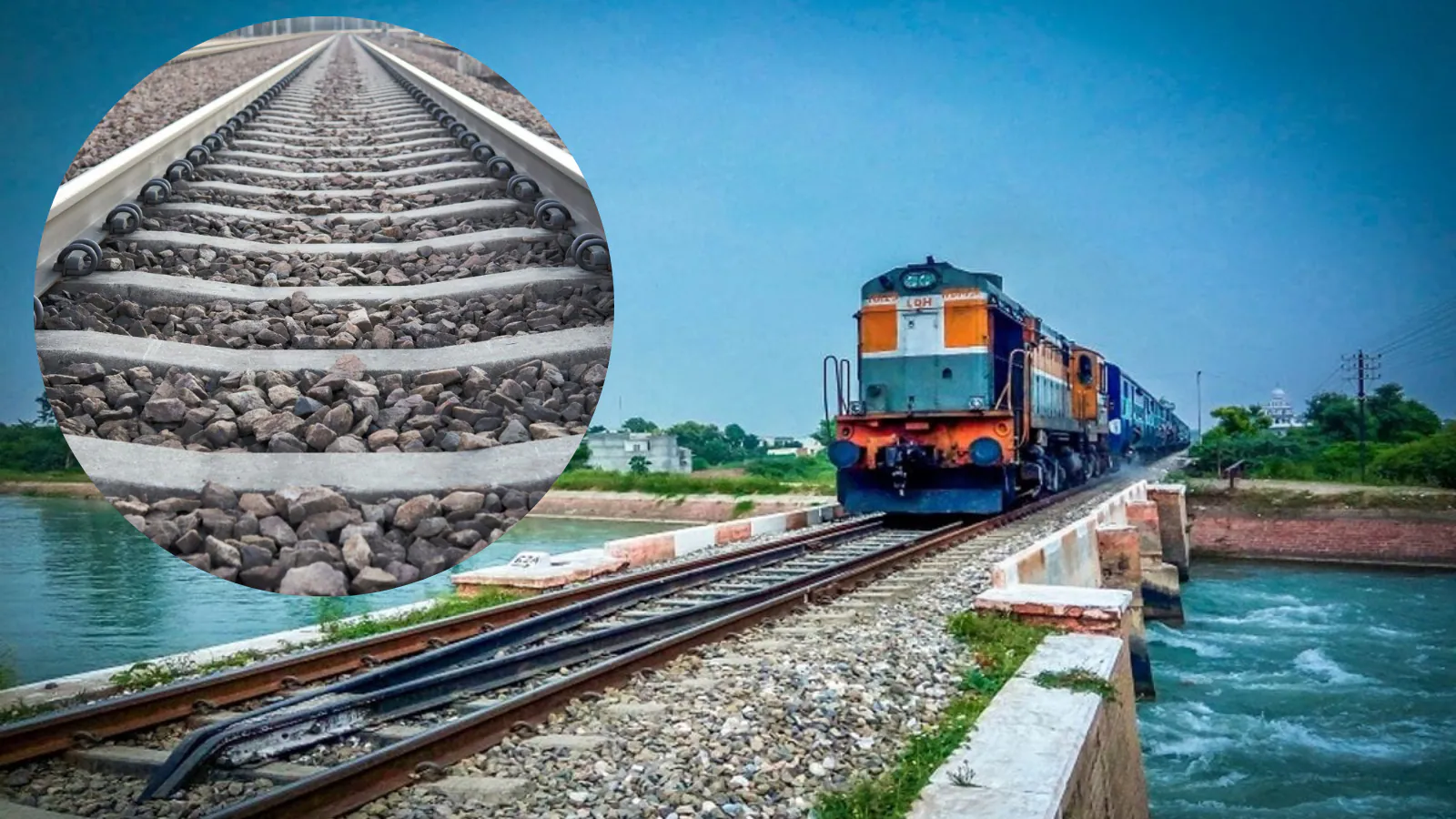By News18,Parishmita Saikia
Copyright news18

Most of us have travelled by train at some point. But have you ever noticed the small stones placed between and alongside the railway tracks? These are not just ordinary stones, they are known as ballast and are a crucial part of railway infrastructure. Their presence plays a vital role in maintaining the stability, safety, and durability of the tracks. Let’s take a closer look at the reasons behind placing ballast stones on railway tracks:
1. Providing Stability to the Rails: When trains pass over the tracks, the rails experience immense stress. Without support, this pressure could cause them to shift, bend, or deform. Ballast stones interlock tightly and hold the tracks in position, ensuring trains can move safely and steadily.
2. Even Distribution of Weight: Trains carry an enormous amount of weight, all of which is concentrated on the tracks. Ballast stones help distribute this load evenly to the ground, reducing direct strain on the rails. This prevents damage and extends the lifespan of the track.
3. Enhancing Drainage: During the rainy season, water can accumulate around the tracks. The gaps between ballast stones allow for efficient water drainage, keeping the rails dry and reducing the risk of rust or weakening due to moisture. Dry tracks are safer and more durable.
4. Minimising Vibration and Noise: Train movement naturally causes vibrations and noise. Ballast stones act as a cushion, absorbing much of the vibration and thereby reducing noise. This not only ensures a smoother ride but also helps limit noise pollution in nearby areas.
5. Protection Against Temperature Changes: Railway tracks expand in the heat and contract in the cold, which can cause cracks and misalignment. Ballast stones provide a buffer against these temperature fluctuations, helping maintain the structural integrity of the rails throughout the year. (Local18)
6. Preventing Plant Growth: If soil were present between the tracks, weeds and plants could grow. Over time, their roots could destabilise the tracks. Since ballast stones lack nutrients, they prevent vegetation from growing, helping to keep the tracks clean and free from obstructions. (Local18)
7. Enhancing Overall Safety: By holding the tracks firmly, distributing weight, draining water, reducing vibrations, and preventing plant growth, ballast stones significantly reduce the risk of derailments and other accidents. In essence, they are a silent but critical safety feature.
In Conclusion, the stones you see between railway tracks are far more than decorative. They play a critical role in maintaining track stability, managing weight distribution, facilitating drainage, reducing vibrations, insulating against temperature extremes, and keeping the tracks clear of vegetation. In short, the placement of ballast stones is a scientifically backed safety measure, forming the foundation of the railway system and ensuring smoother, safer, and longer-lasting train travel across the country.



